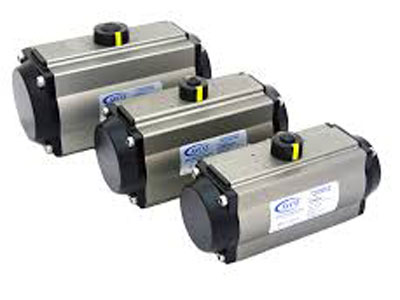Key Takeaway
Rotary actuators are used in various applications, offering precise control and high torque output. Understanding their benefits and applications is crucial for selecting the right actuator for your needs.
Consider factors such as torque, speed, and environment when selecting a rotary actuator. Proper selection ensures efficient and reliable operation, enhancing productivity and reliability.
Applications in Manufacturing
Rotary actuators are widely used in manufacturing due to their ability to produce controlled rotational motion, which is essential in various processes. In automated assembly lines, rotary actuators are commonly used to rotate components or tools to specific positions, improving the efficiency of tasks like assembly, welding, or packaging. For example, in an automated welding station, a rotary actuator might rotate a part to ensure that the correct side is welded, or it may rotate a tool to the appropriate angle for precise welding. This capability enhances precision and reduces manual labor.
Another significant application of rotary actuators in manufacturing is in conveyor systems. Rotary actuators can be used to move, rotate, or position products as they travel along a conveyor belt. This is especially useful in sorting systems, where items may need to be rotated to the correct orientation or moved to different sections of the assembly line. By using rotary actuators, manufacturers can streamline production, improve the accuracy of part placement, and reduce downtime caused by manual handling.
Additionally, rotary actuators are used in machines that require turning, such as lathes, CNC machines, or automated tool changers.

Uses in Aerospace Engineering
In aerospace engineering, rotary actuators play a critical role in ensuring safety and precision. They are used to control wing flaps, landing gear, and cargo bay doors, facilitating smooth operations during flights.
For example, actuators adjust the angle of wing flaps, optimizing lift and drag for takeoff and landing. This improves fuel efficiency and ensures flight stability under varying conditions.
Rotary actuators are also employed in spacecraft, managing components like solar panels and antenna positioning systems. Their compact design and reliability make them indispensable in environments where precision is paramount.
Additionally, they are part of testing equipment for aircraft components. These actuators simulate aerodynamic forces, ensuring that parts can withstand real-world stresses.
You May Like to Read
Roles in Material Handling Systems
Material handling systems rely heavily on rotary actuators for efficient movement and positioning of goods. From warehouse conveyors to automated cranes, actuators enable the seamless transfer of materials.
In logistics, actuators are used in automated guided vehicles (AGVs) to rotate lifting arms or platforms for precise loading and unloading. Their ability to handle heavy loads with minimal energy consumption is a key advantage.
In industrial applications, rotary actuators are integral to palletizing systems, ensuring accurate stacking of goods. They are also used in rotating turntables that align products for processing or packaging.
Their contribution to automation helps businesses save time and reduce labor costs. For example, actuators in distribution centers enable faster sorting and movement of parcels, meeting the demands of e-commerce operations.
Robotics and Automation Integration
Rotary actuators are at the heart of robotic and automation systems, enabling precise and repetitive movements. In robotics, actuators allow arms and joints to rotate smoothly, essential for applications like assembly, welding, and painting.
For instance, robotic arms equipped with actuators can mimic human motion, performing intricate tasks with high accuracy. This is critical in industries like electronics manufacturing, where precision is non-negotiable.
In automation, actuators enable the operation of valves, levers, and gears in processes such as chemical mixing, pharmaceutical packaging, and food processing. Their integration ensures that machines operate reliably and efficiently.
Advanced robotics also benefit from electric rotary actuators, which offer programmable motion control. This enhances the flexibility and adaptability of robots in dynamic environments.
Emerging Fields for Rotary Actuators
As technology evolves, rotary actuators are finding applications in emerging fields. In renewable energy, they are used in wind turbines to adjust blade angles and maximize efficiency.
In healthcare, actuators power surgical robots, enabling precise and minimally invasive procedures. They also play a role in rehabilitation devices, assisting patients with controlled movements.
Actuators are increasingly used in autonomous vehicles, controlling sensors, cameras, and steering mechanisms. This ensures accurate navigation and enhances safety in self-driving systems.
The field of IoT and smart systems is another area where rotary actuators are gaining prominence. They enable motion in devices like smart home systems, enhancing convenience and automation.
Conclusion
Rotary actuators are used in various applications, offering precise control and high torque output. Understanding their benefits and applications is crucial for selecting the right actuator for specific needs.
By considering factors such as torque, speed, and environment, users can effectively integrate rotary actuators into their systems, enhancing productivity and reliability.
